Fighting ‘Eyewash’ on Penn Station
Critics of Hochul’s plan say she’s using visual propaganda – and offer three alternatives
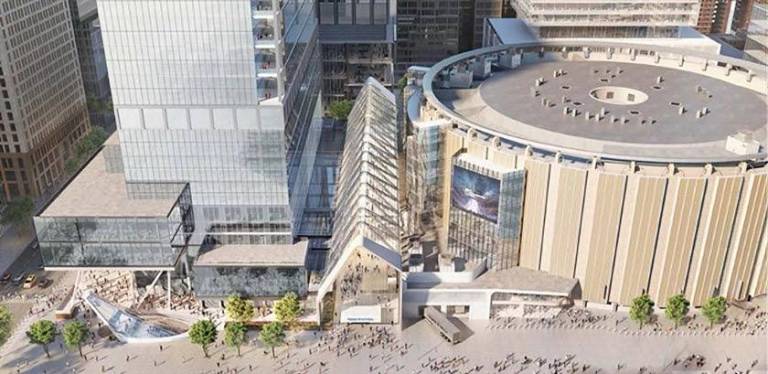
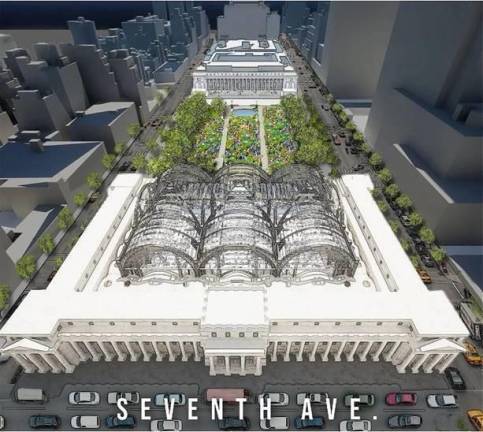
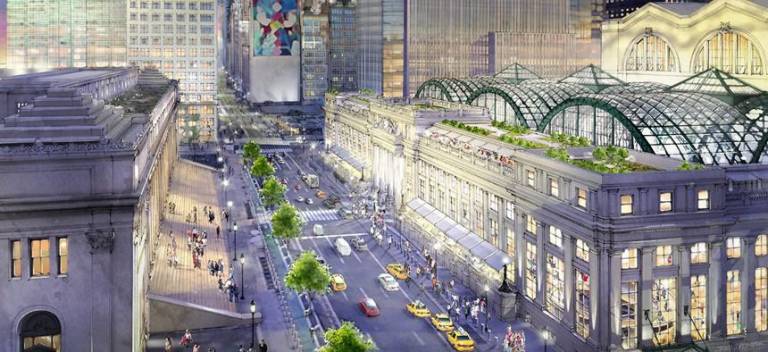
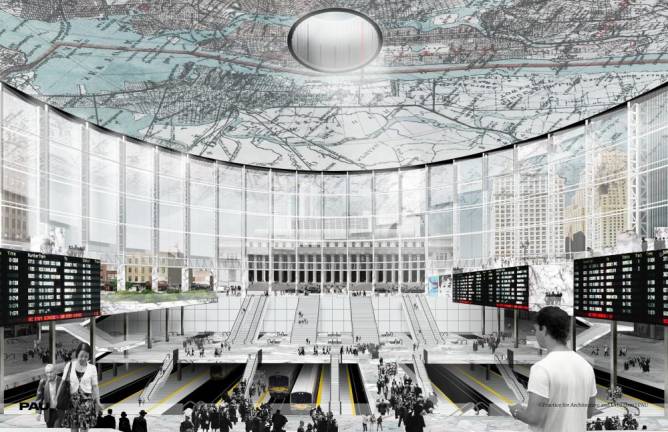
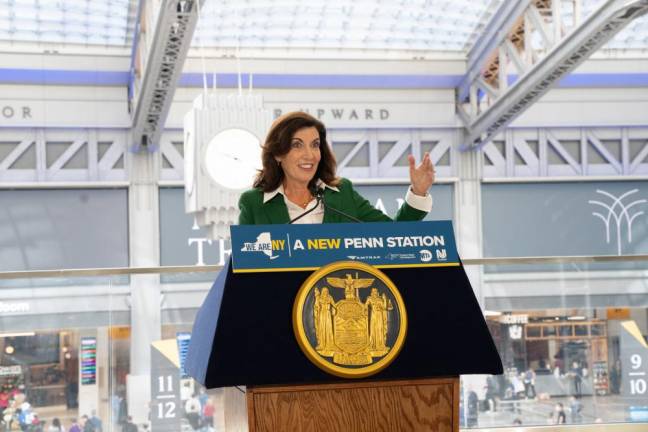
One of the challenges of debating a development project is that the core of the argument is presented in images, not words. Which is where Samuel Turvey says the fight over the future of Penn Station and its neighborhood has run off the rails, so to speak.
“My concern is even where the Governor’s plan is criticized in the media,” says Turvey, a fierce opponent, “the State’s renderings are proffered and subliminally advertise for a really bad plan.”
These renderings depict a transit hub suffused in sunlight, resembling, as Turvey puts it, “a suburban shopping mall or the duty-free section of an airport departures terminal.”
He denounces this as “eyewash,” a kind of visual propaganda that he says doesn’t accurately represent even the states own studies of the shadows that would be cast across the renovated, but still underground, station by the super-tall buildings authorized under governor Kathy Hochul’s plan.
Opponents of her plan have been invigorated by word from the key developer, Vornado Realty Trust, that it was not rushing to build the proposed towers at a moment when interest rates are rising, the economy is rickety and office space is going begging.
Turvey, the chair of ReThink NYC, which advocates for better urban planning and development, says Vornado’s pause is an opportunity to weigh the governor’s plan against proposals from his group and others.
Plans that Move MSG
As part of that he urged news media to show renderings of all the proposals, not just the ones drawn by the state to support the Governor’s plan. We do that in our pages.
The three alternative plans share one basic premise that is different from the state’s plan. They all move Madison Square Garden, which has sat atop Penn Station since the original McKim, Mead and White Pennsylvania Station was demolished in the 1960s.
The Garden’s permit to use the space above Penn station expires next year, so the city and state have considerable leverage to press the owner, James Dolan, to move.
While some state officials acknowledge that Penn Station is cramped in ways that can’t be fixed without moving the Garden, they argue that commuters deserve a better station now and the renovation should not be delayed in the hope the garden will find a new home.
The renderings of a renovated Penn station that Turvey criticizes are designed to show that acceptable, even if not perfect, improvements can be made even if Madison Square Garden stays where it is.
“We think the uncritical eye in the public is being deceived and may believe it,” Turvey explained. “We want to make sure the public realizes this is a highly compromised proposal and will bring very little net improvement to the calamity at Penn Station and will actually bring harm.”
“Freeze-Frame in Concrete”
Turvey argued that the Governor’s proposed renovation of Penn Station would take a dreadful facility and bring it up more or less to the level of the Port Authority Bus Terminal
“They will freeze-frame in concrete some of the worst design and urban planning decisions one can think of for decades to come and perhaps for more than a century. If a planning and architecture student turned this in at a University they would get an F.
“Their trying to sell us on an underground station that will be bathed in natural light is demonstrably false and we felt it was time to better illustrate that.”
Turvey distributed images of his own plan, as well as those of two others, that “have all proposed above ground stations which make significant use of natural light as do most of our nation’s train stations and airports.”
The three plans are:
1. Grand Penn Community Alliance would tear down the current Madison Square Garden and two office buildings and rebuild the train hall of the original Pennsylvania Station along Seventh Avenue for use by modern day commuters. “The bones are there for something beautiful and functional that can serve as the center of a new mixed-use neighborhood.” Between this new train hall and the Moynihan Train Hall for Amtrak would be a park (similar to Bryant Park behind the New York Public Library) with skylights above the boarding concourses. “It all works together as a whole,” said Alexandros Washburn of the Alliance.
2. ReThinkPennStationNYC would also remove The Garden and office buildings and goes even further in rebuilding the original Pennsylvania Station, “with modifications for current technologies and capacity needs,” Turvey said. “We are open to park land and have advocated for it in the past but want to make sure the above ground station can handle the capacity needs of the station first.” The plan also calls for a reimagined façade on eighth avenue to reflect how much the city has moved west since the original.
3. Vishaan Chakrabarti, founder of the Practice for Architecture and Urbanism, offered a radically different idea. Instead of rebuilding the old station he would use the current structure of Madison Square Garden, recladding the circular structure with clear materials and thus opening the station below to the sky. A new venue for sports and concerts would be built elsewhere. He would not remove the two office buildings on the site.
Turvey said he was planning to hold a forum at Cooper Union early in the new year to discuss all three plans. Meantime, Community Board 5 is proceeding with its recently announced plan to go back to the drawing board and create an alternate to the governor’s plan for development in the neighborhood.
The Empire State Development Corporation, which is managing the governor’s plan, did not respond to repeated requests for comment.
The State’s renderings resemble “a suburban shopping mall or the duty-free section of an airport departures terminal.” Samuel Turvey, chair of ReThink NYC